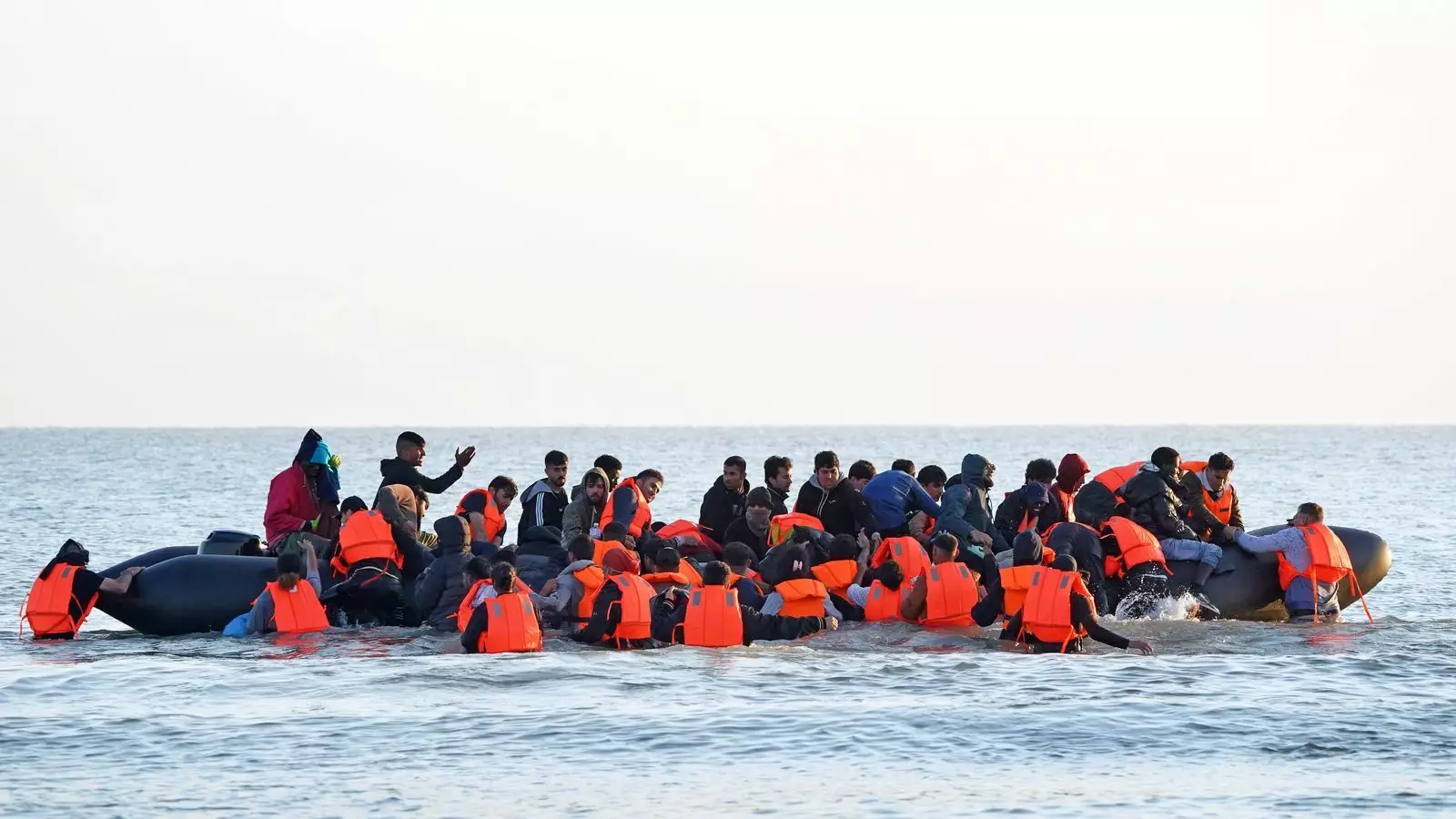The English Channel has become an emblematic site of migration challenges, showcasing not only the numbers of people crossing but also the grim realities these individuals face. In 2024, the provisional figures suggest that 36,816 migrants successfully made their journey to the UK, illustrating a significant surge of 25% compared to 2023 when 29,437 arrivals were registered. However, this total remains 20% lower than the alarming record of 45,774 crossings in 2022, presenting a complex picture of migration patterns in recent years.
The increasing number of crossings since the tracking began in 2018 highlights a troubling trend. From a mere 299 arrivals in 2018 to significant leaps resulting in over 36,000 crossings in 2024, the escalation signifies a growing reliance on perilous sea routes. The critical point of concern lies in the high stakes involved; the journey across the English Channel, known as one of the world’s busiest shipping lanes, has also become one of the deadliest. While the Home Office did not publish specific death tolls for 2024, the French Coastguard reported that 53 lives were tragically lost in the past year, marking it as the deadliest year witnessed so far in this ongoing crisis.
Although humanitarian routes exist for individuals fleeing from trauma-imbued zones like Ukraine and Afghanistan, not everyone has recourse to these safer options. Many asylum seekers are caught in a web of desperation, often turning to dangerous and illegal means of reaching the UK. Current immigration laws in the UK restrict lawful settlement mainly to recognized refugees and select family members; thus, those unable to obtain this status may feel compelled to risk their lives by relying on unscrupulous human traffickers and smuggling networks.
Despite claims of strong political will, both leading UK political parties have expressed intentions to tackle the issue of human trafficking and reduce Channel crossings. Labour’s commitment to “smash the gangs” sheds light on the government’s focus on the criminal aspects of migration rather than directly addressing the humanitarian needs of the migrants themselves. This dual-focus approach raises questions about the efficacy of such strategies in resolving the underlying causes that compel individuals to undertake such perilous journeys.
As government officials grapple with how best to manage incoming migration, the plight of the individuals involved can often be overlooked. The stark contrast between legal pathways and the grim realities faced by those seeking refuge underscores the urgent need for comprehensive reforms aimed at both aiding migrants and dismantling organized crime networks. Striking a balance between national security and human rights remains a crucial task for policymakers.
As we delve into the complexities of migration across the English Channel, we are repeatedly reminded of the human stories that intertwine with these statistics. Addressing the challenges of asylum-seeking in the UK necessitates not just punitive measures against traffickers, but a profound understanding and amelioration of the factors driving migration—if genuine progress is to be made.

